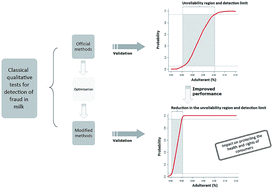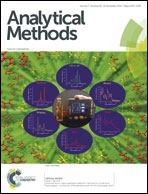Performance improvement and single laboratory validation of classical qualitative methods for the detection of adulterants in milk: starch, chlorides and sucrose
Abstract
Milk stands out among the foods that are subject to adulteration. Several studies have shown that milk adulteration is a reality in many countries, despite the existing inspection routines. Furthermore, there is an aggravating factor in that there are no reports in the literature concerning the validation of the classical qualitative methods that are commonly used to detect fraud in milk and that are described in the legislation. In the present study, a novel validation approach was applied on classical qualitative methods related to the detection of the density restoratives starch, chlorides and sucrose in raw milk, considering the official and modified versions. Rates, unreliability regions, detection limits, accordance, concordance, selectivity and robustness were estimated. Although simple, the proposed modifications significantly increased the efficiency of the methods, generating a lower frequency of errors or false results and a reduction in the detection limits and uncertainty ranges, consequently enhancing the capability of detecting adulterations.

- This article is part of the themed collection: Detecting food authenticity and integrity

 Please wait while we load your content...
Please wait while we load your content...